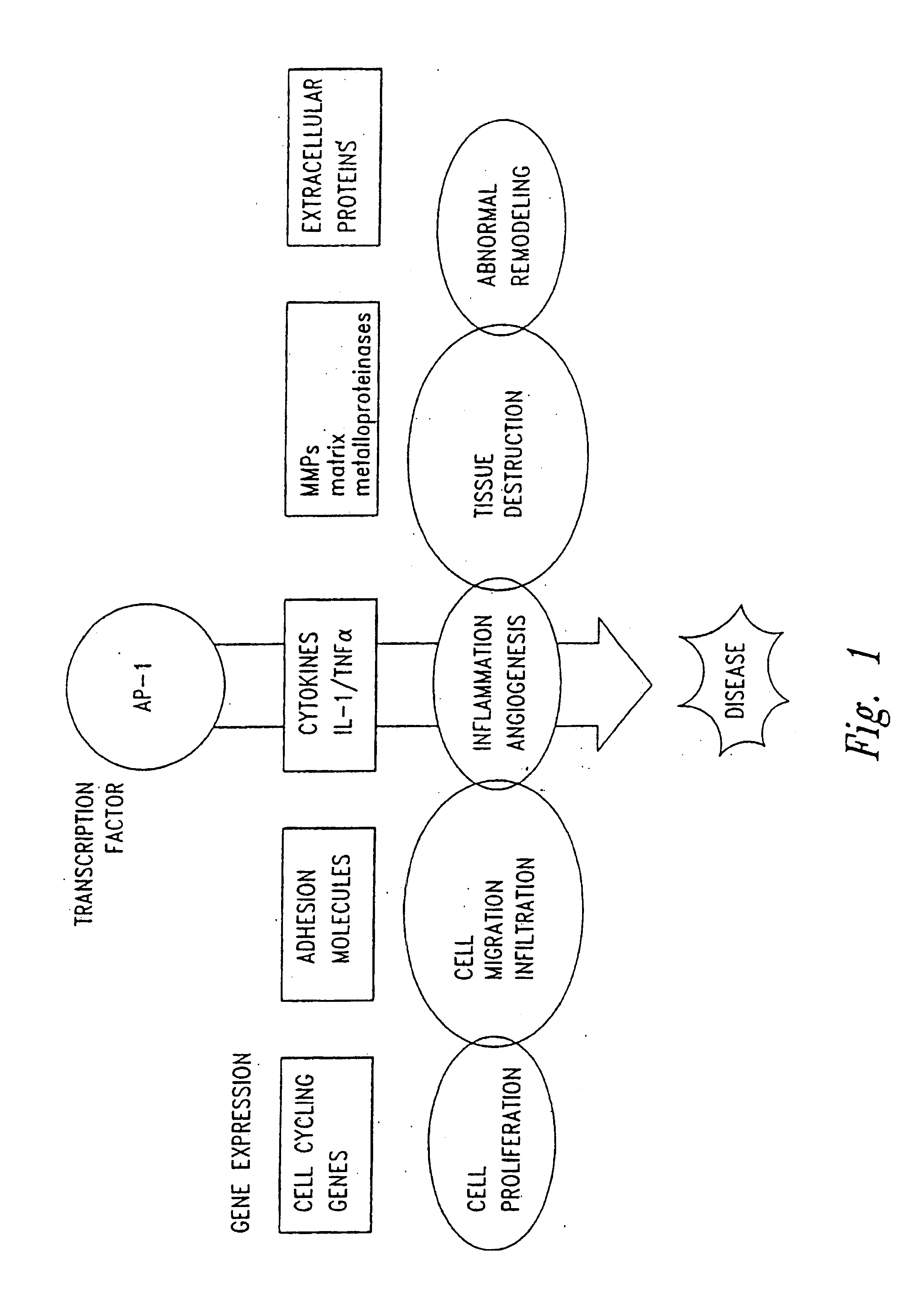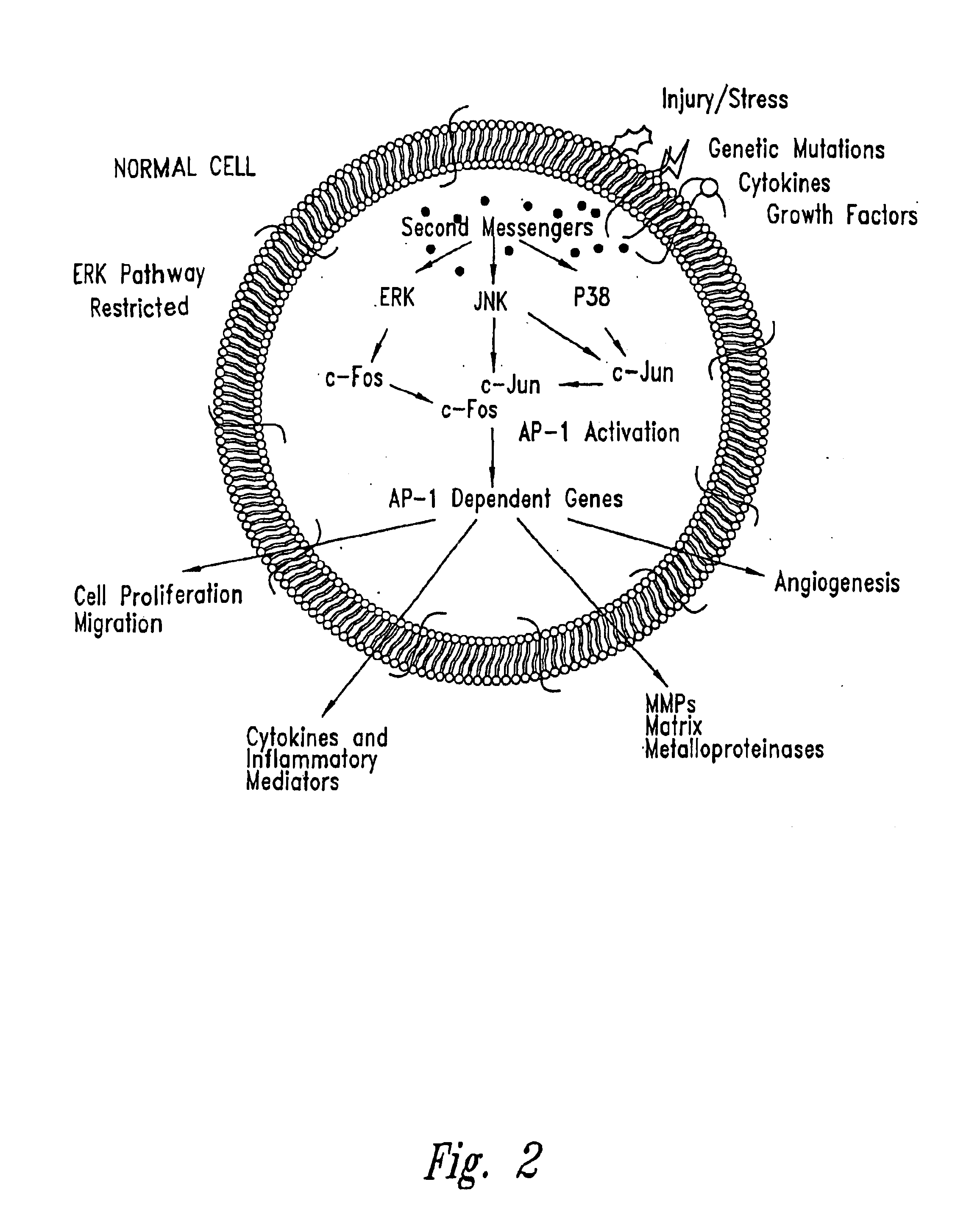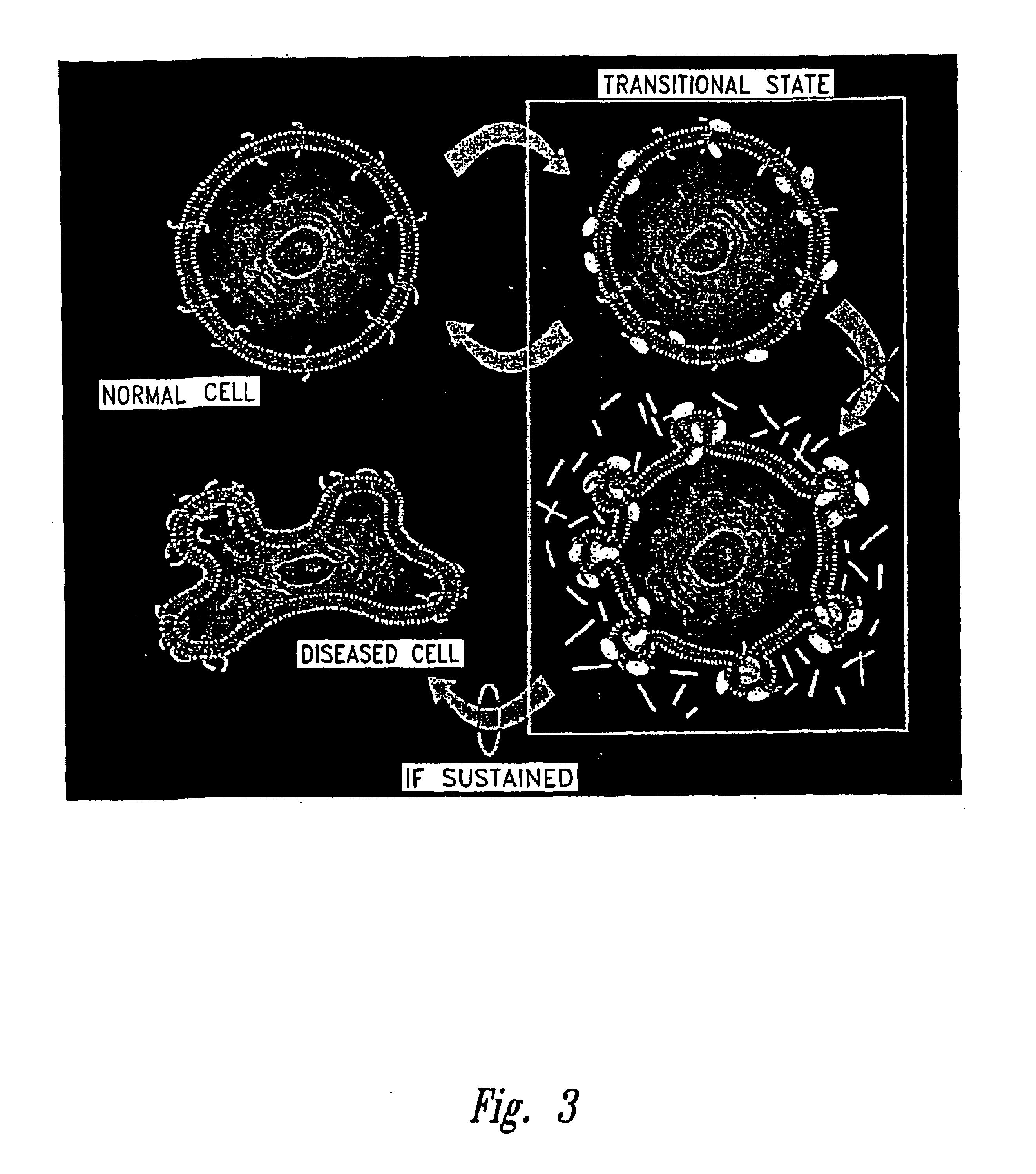Compositions and methods for treating cellular response to injury and other proliferating cell disorders regulated by hyaladherin and hyaluronans
a technology of hyaluronan and hyaluronate, which is applied in the field of compositions and methods for treating the cellular response to injury and/or the abnormal proliferation of cells, and can solve problems such as interfering with the response-to-injury process
- Summary
- Abstract
- Description
- Claims
- Application Information
AI Technical Summary
Benefits of technology
Problems solved by technology
Method used
Image
Examples
example 1
Requirement for Focal Adhesions for Maxmal Activaon of Erk Kinase in Response to Growth Factors
[0281]In disease or injury, mediators such as cytokines, growth factors and genetic mutations activate a myriad of responses leading in increased expression of AP-1 dependent genes (FIG. 1). These genes are required for cell proliferation, migration, inflammation, tissue destruction and abnormal tissue remodeling. The activation of the AP-1 pathway occurs through the activation of the mitogen activated protein (MAP) kinase. The present invention discloses that in normal cells the activation of the AP-1 pathway by cytokines and other mediators is restricted and thus genes involved in disease cannot be induced significantly. Further this restriction is a result of the lack of extracellular signal-regulated kinase-1 (ERK-1) activation in normal cells (FIG. 2). Normal cells must undergo a series of transitional stages to form a diseased state cell containing focal adhesions and is then respons...
example 2
RHAMM Overexpression is Associated with Increased Erk Kinase Activation and AP-1 Activation.
[0288]As noted above, expression of transitional molecules such as RHAMM results in the initiation of cell transformation from a normal state to a diseased state. RHAMM is believed to play a role in the initial activation of ERK pathway, thus removing the ERK restriction found in normal cells. This activation leads to the expression of c-fos and c-jun resulting in the AP-1 activation and induction of AP-1 dependent genes involved in many of the disease processes associated with inflammatory, degenerative and proliferative diseases (FIG. 5).
[0289]Cells that overexpress a hyaladherin such as RHAMM in response to stress or during proliferation exhibit elevated activation of erk kinase signaling activity as shown in FIG. 6. Erk kinase activation is stimulated directly by overexpression of a hyaladherin such as RHAMM. Briefly, the cell line LR21 was constructed by transfecting normal quiescent par...
example 3
Overexpression of Rhamm Activates Expression of C-Fos and C-Jun, and Matrix Metalloproteinases Associated with Response-to-Injury Processes
[0293]Expression of the transcription factors c-fos, c-jun, jun B are associated with response to injury processes in mammalian tissues. Northern analysis was used to show that of c-fos, c-jun, and jun B but not jun D expression are stimulated by overexpression of the transition stage hyaladherin, RHAMM.
[0294]Briefly, cells were grown in DMEM with 10% FBS and were starved in the absence of serum for 6 h. Cells were washed twice with PBS and total RNA was isolated by guanidine isothiocyanate method. In concise, cells were lysed in 4 ml solution D (5.3 M guanidine isothiocyanate, 30 mM sodium citrate, 0.7% N-laurylsarcosine, 0.72% 2-mercaptoethanol). To each sample, added 4 ml of acid phenol, 1 ml of chloroform and 0.45 ml of 2 M sodium acetate. The solution was mixed well and centrifuged at 7000 rpm for 30 min, the aqueous phase was collected and ...
PUM
| Property | Measurement | Unit |
|---|---|---|
| Dimensionless property | aaaaa | aaaaa |
| Dimensionless property | aaaaa | aaaaa |
| Dimensionless property | aaaaa | aaaaa |
Abstract
Description
Claims
Application Information
 Login to View More
Login to View More - R&D
- Intellectual Property
- Life Sciences
- Materials
- Tech Scout
- Unparalleled Data Quality
- Higher Quality Content
- 60% Fewer Hallucinations
Browse by: Latest US Patents, China's latest patents, Technical Efficacy Thesaurus, Application Domain, Technology Topic, Popular Technical Reports.
© 2025 PatSnap. All rights reserved.Legal|Privacy policy|Modern Slavery Act Transparency Statement|Sitemap|About US| Contact US: help@patsnap.com



